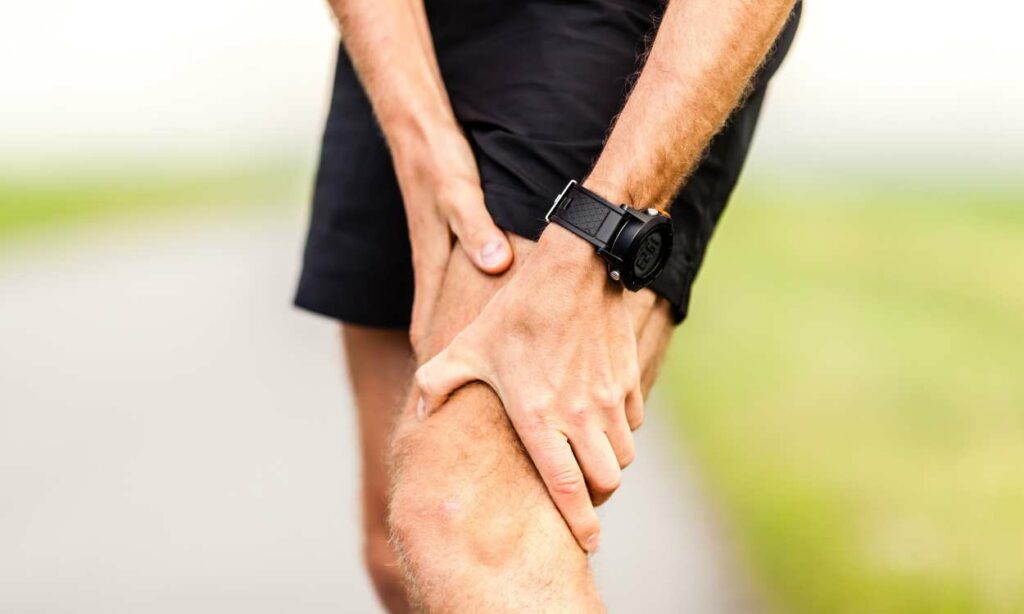The sudden twinge in your hamstring wasn’t something you expected when you pushed yourself a little harder in that workout or sprinted to catch the bus. The deep, aching pain and stiffness in the back of your thigh feel relentless, making even simple movements a chore. But what if there was a way to not only understand this discomfort but to also find manageable, effective solutions to ease it? Whether you’re a dedicated athlete or someone who just got caught off-guard by this niggling pain, you’re in the right place. Dive in to unravel the mystery of hamstring tendonitis and discover a treasure trove of exercises and treatments tailored to bring you relief.
Contents
Understanding Hamstring Tendonitis
 Hamstring tendonitis, often dubbed the ‘runner’s bane‘, is an inflammation or irritation of the tendons that attach the hamstring muscles to the bones. These muscles run down the back of your thigh and play a pivotal role in bending your knee and extending your hip. So, when these tendons are inflamed, the pain can be hard to ignore.
Hamstring tendonitis, often dubbed the ‘runner’s bane‘, is an inflammation or irritation of the tendons that attach the hamstring muscles to the bones. These muscles run down the back of your thigh and play a pivotal role in bending your knee and extending your hip. So, when these tendons are inflamed, the pain can be hard to ignore.
But what triggers this inflammation? The primary culprits are usually overuse or a sudden increase in activity. Think rapid intensification of training, insufficient warm-up before exercise, or even prolonged sitting. Sometimes, muscle imbalances or poor flexibility can also set the stage for tendonitis.
Symptoms are unmistakable. Apart from the telltale pain at the back of the thigh, you might also notice swelling, warmth, and redness in the affected area. The discomfort might heighten during activities like running, climbing, or even when you’re resting. If you’re nodding in agreement with these signs, read on to discover effective strategies and exercises that can offer respite.
Common Causes of Hamstring Tendonitis
 When it comes to hamstring tendonitis, its onset isn’t always a mystery. Pinpointing the cause can be key to preventing recurrence and ensuring effective recovery. Let’s uncover some of the primary culprits:
When it comes to hamstring tendonitis, its onset isn’t always a mystery. Pinpointing the cause can be key to preventing recurrence and ensuring effective recovery. Let’s uncover some of the primary culprits:
- Overexertion in Sports: Athletes, especially runners and sprinters, often bear the brunt of hamstring tendonitis. Rapidly increasing distances or intensities without proper acclimatization can lead to undue stress on the tendons.
- Improper Warm-up: Jumping straight into intense activity without a gradual warm-up can shock the tendons. A well-rounded warm-up helps prepare your muscles and tendons for the physical strain they’re about to endure.
- Muscle Imbalances: If your quadriceps (front thigh muscles) are significantly stronger than your hamstrings, it can put disproportionate strain on the hamstring tendons, making them more susceptible to injuries.
- Incorrect Workout Techniques: Squats, lunges, or deadlifts with poor form can place undue stress on the hamstring tendons. Ensuring proper technique is pivotal not just for effectiveness but also for injury prevention.
- Past Injuries: Previous hamstring injuries can make the tendons more vulnerable to further issues, especially if the initial injury wasn’t managed and rehabilitated correctly.
- Age and Degeneration: Like much of our body, tendons lose elasticity and strength as we age. This can make older individuals more prone to conditions like tendonitis.
- Insufficient Flexibility: Tight muscles can pull and strain the tendons. Regular stretching and flexibility exercises can play a preventative role.
Understanding these causes can be the first step to tailor an effective recovery strategy. The good news? With the right approach, relief isn’t just possible – it’s probable.
How Do You Treat Hamstring Tendonitis?
 If you suspect you’re grappling with the discomfort of hamstring tendonitis, timely action can make a significant difference in your recovery trajectory. Here are some home remedies and treatment options to address the pain and inflammation:
If you suspect you’re grappling with the discomfort of hamstring tendonitis, timely action can make a significant difference in your recovery trajectory. Here are some home remedies and treatment options to address the pain and inflammation:
- Rest: It’s vital to allow the injured tendon some downtime. Avoid activities that exacerbate the pain, and give your hamstring the break it needs to start the healing process.
- Ice: Cold therapy can be remarkably effective in reducing swelling and pain. Apply an ice pack (wrapped in a cloth to prevent frostbite) to the affected area for 15-20 minutes every 1-2 hours during the initial 48 hours post-injury.
- Compression: Wrapping the injured area with a bandage or using compression sleeves can help manage swelling. Just ensure it’s not so tight that it cuts off circulation.
- Elevation: Whenever possible, prop your leg up so that it’s elevated above heart level. This aids in decreasing swelling by facilitating the return of blood and fluid back to the heart.
- Over-the-Counter Pain Relievers: Non-prescription NSAIDs (Non-Steroidal Anti-Inflammatory Drugs) like ibuprofen can be helpful in managing pain and inflammation. However, always consult with a healthcare professional before starting any medication.
- Gentle Stretching: Once the initial pain subsides, gentle stretching exercises can aid in restoring flexibility and strength. Be cautious and ensure you don’t push to the point of pain.
- Consult a Physical Therapist: A trained physical therapist can provide targeted exercises to rehabilitate the tendon, strengthen the hamstrings, and prevent future occurrences.
- Avoid Rushing Back: It’s essential to ensure complete recovery before diving back into strenuous activities. Patience now can save you from recurrent issues down the line.
Remember, while these steps are beneficial for immediate relief and early recovery, always consult a medical professional for a comprehensive evaluation and tailored treatment plan.
Strengthening Exercises for Recovery
Rehabilitating hamstring tendonitis doesn’t only mean treating the present injury. By strengthening the hamstrings and the supporting muscles, you’re also fortifying against potential future issues. Below are some effective exercises designed to rebuild and protect:
Bridges

- Lie flat on your back, knees bent and feet flat on the floor, hip-width apart.
- Press through your heels, raising your hips to form a straight line from shoulders to knees.
- Hold for a moment, then lower slowly.
- Purpose: Strengthens the hamstrings, glutes, and lower back.
Hamstring Curls with Resistance Band
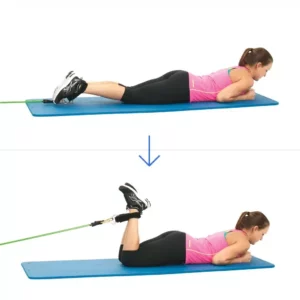
- Anchor a resistance band around a sturdy post. Lie on your stomach and loop the band around your ankles.
- Slowly curl your heels towards your buttocks against the band’s resistance.
- Release slowly.
- Purpose: Targets the hamstrings directly, enhancing strength and flexibility.
Single-leg Deadlifts
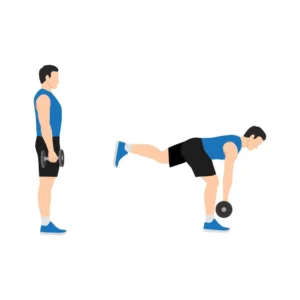
- Holding a light weight in both hands, stand on one leg.
- Keeping your back straight and the supporting leg slightly bent, hinge at the hips and lower the weights towards the ground.
- Rise back to the starting position.
- Purpose: Engages hamstrings, glutes, and core, promoting balance and unilateral strength.
Nordic Curls (with a partner)
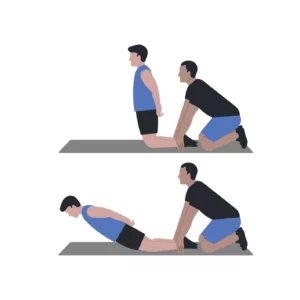
- Kneel on the ground with a partner holding your ankles firmly.
- Engage your core and hamstrings, then slowly lean forward while trying to resist the motion using your hamstrings.
- Push yourself back up to the starting position using your hands.
- Purpose: This is an advanced exercise that intensely activates the hamstrings.
Swiss Ball Hamstring Curls
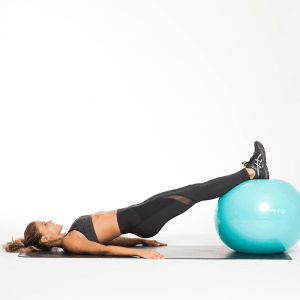
- Lie on your back with your heels on a Swiss ball.
- Lift your hips and pull the ball towards you by curling your heels, then push it back out.
- Purpose: Works the hamstrings while also challenging core stability.
Step-ups
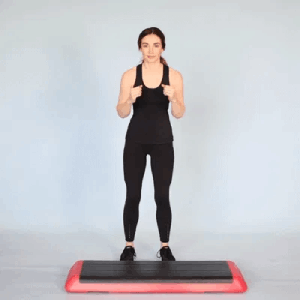
- Using a bench or a sturdy platform, step up with one foot followed by the other.
- Step down in the same sequence.
- Purpose: Enhances hamstring strength while also targeting the quads and glutes.
It’s crucial to approach these exercises with caution, especially if you’re in the recovery phase. Start with a low number of repetitions and sets, and gradually increase as your strength and confidence build.
Stretching Techniques for Flexibility
A crucial counterpart to strengthening exercises, stretching plays a vital role in both treating and preventing hamstring tendonitis. It ensures that the muscle remains supple and less prone to injury. Increasing flexibility can ease tightness, reduce pain, and improve overall mobility. Here are some highly beneficial stretches to include in your routine:
Standing Hamstring Stretch
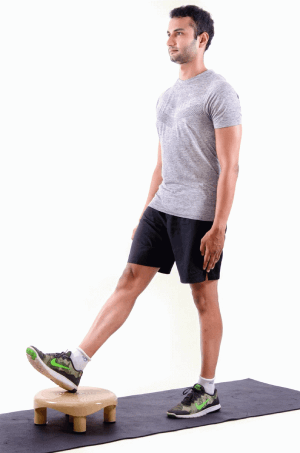
- Stand upright and place one foot in front of you on a raised surface, like a step or bench, with toes pointed up.
- Keeping your back straight, hinge at the hips and lean forward until you feel a stretch in the hamstring of the raised leg.
- Hold for 20-30 seconds and switch sides.
- Purpose: Targets the hamstrings directly and helps alleviate tightness.
Lying Hamstring Stretch with a Strap
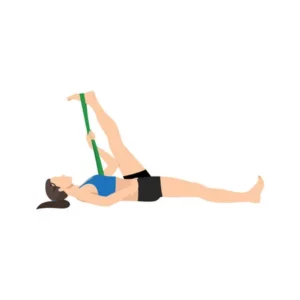
- Lie on your back and raise one leg up, keeping it straight.
- Loop a strap or towel around the arch of your foot, holding both ends with your hands.
- Gently pull your leg towards you while keeping both hips on the ground.
- Hold for 20-30 seconds and switch sides.
- Purpose: Allows for a controlled, deep stretch of the hamstrings.
Seated Forward Bend
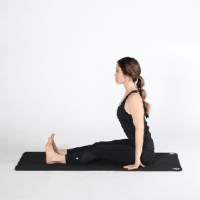
- Sit with both legs extended straight in front of you.
- Hinge at the hips and lean forward, reaching towards your toes.
- Keep your spine long, and bend only as far as you can without rounding your back.
- Hold for 20-30 seconds.
- Purpose: Stretches the entire posterior chain, including the hamstrings, calves, and lower back.
Butterfly Stretch

- Sit on the ground, bringing the soles of your feet together and letting your knees drop out to the sides.
- Holding onto your ankles, gently press your knees down with your elbows, feeling a stretch in your inner thighs.
- Purpose: This stretches the adductors but also promotes overall hip flexibility, which is beneficial for hamstring health.
Calf and Hamstring Stretch

- Start in a hands-and-knee position. Tuck your toes under and lift your hips, coming into a downward-facing dog yoga pose.
- Press your heels towards the ground and push through your palms.
- Purpose: This dual-action stretch targets both the calves and hamstrings, enhancing overall leg flexibility.
Regularly incorporating these stretches into your routine can aid in the prevention of hamstring tendonitis and help manage current symptoms.
Long-Term Prevention Strategies
To minimize the risk of recurring hamstring tendonitis and ensure the long-term health of your hamstrings and surrounding muscles, consider integrating these preventive measures into your daily routines and workout regimens:
- Start your exercises with dynamic stretches like leg swings or walking lunges. These prepare the hamstrings for more intensive activity and reduce the risk of strains or tears.
- Regularly incorporate both hamstring stretches and strengthening exercises, even when you’re not experiencing symptoms. This proactive approach bolsters resilience against future injuries.
- When increasing the intensity or duration of workouts, do so gradually. Making sudden jumps can overstrain the hamstrings.
- Wearing shoes that offer adequate support and cushioning can ensure proper leg alignment and reduce undue strain on your hamstrings.
- Whether you’re lifting weights, running, or engaging in other sports, maintain proper form. Incorrect techniques can place unnecessary stress on your hamstrings and other muscles.
- Allow your muscles adequate time to recover after strenuous workouts. Overtraining can be a direct pathway to injuries like tendonitis.
- Proper hydration aids in muscle function and recovery. Dehydrated muscles can be more prone to injury.
By incorporating these preventive strategies, you’ll not only minimize the risk of hamstring tendonitis but also promote the overall health and functionality of your muscles, setting the stage for optimal athletic performance and daily mobility.
Conclusion
Dealing with hamstring tendonitis can be challenging, but with the right knowledge and preventive measures, you can pave the way for a pain-free future. Remember, persistent pain shouldn’t be overlooked. If you’re experiencing Knee pain, physical therapy for knee pain at PhysioMantra can help: Book an online physical therapy session.

